
The archbishop of Canterbury is the senior bishop and a principal leader of the Church of England, the ceremonial head of the worldwide Anglican Communion and the bishop of the Diocese of Canterbury. The current archbishop is Justin Welby, who was enthroned at Canterbury Cathedral on 21 March 2013. Welby is the 105th person to hold the position, as part of a line of succession going back to the "Apostle to the English" Augustine of Canterbury, who was sent to the island by the church in Rome in 597. Welby succeeded Rowan Williams.
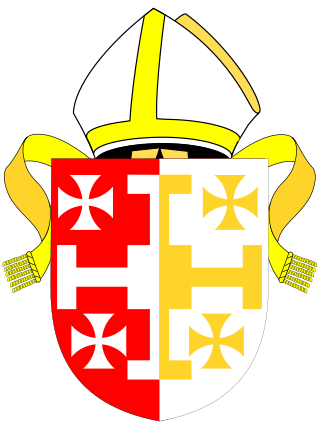
The Diocese of Lichfield is a Church of England diocese in the Province of Canterbury, England. The bishop's seat is located in the Cathedral Church of the Blessed Virgin Mary and Saint Chad in the city of Lichfield. The diocese covers 4,516 km2 (1,744 sq mi) of several counties: almost all of Staffordshire, northern Shropshire, a significant portion of the West Midlands, and very small portions of Warwickshire and Powys (Wales).

The Diocese of Southwark is one of the 42 dioceses of the Church of England, part of the worldwide Anglican Communion. The diocese forms part of the Province of Canterbury in England. It was created on 1 May 1905 from part of the ancient Diocese of Rochester that was served by a suffragan bishop of Southwark (1891–1905). Before 1877 most of the area was part of the Diocese of Winchester, some being part of the Diocese of London.
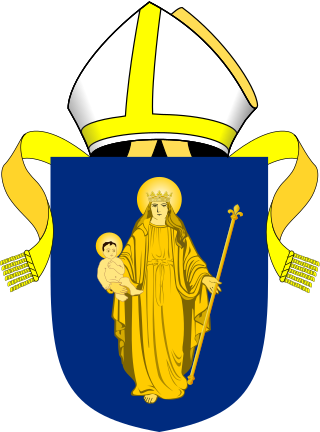
The Diocese of Salisbury is a Church of England diocese in the south of England, within the ecclesiastical Province of Canterbury. The diocese covers the historic county of Dorset, and most of Wiltshire. The diocese is led by Stephen Lake, Bishop of Salisbury, and by the diocesan synod. The bishop's seat is at Salisbury Cathedral.

The Diocese of St Albans forms part of the Province of Canterbury in England and is part of the wider Church of England, in turn part of the worldwide Anglican Communion.
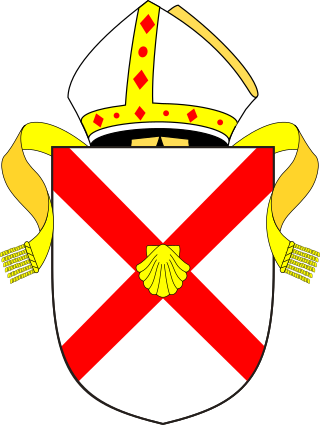
The Diocese of Rochester is a Church of England diocese in the English county of Kent and the Province of Canterbury. The cathedral church of the diocese is Rochester Cathedral in the former city of Rochester. The bishop's Latin episcopal signature is: " (firstname) Roffen", Roffensis being the Latinised adjective referring to Rochester.
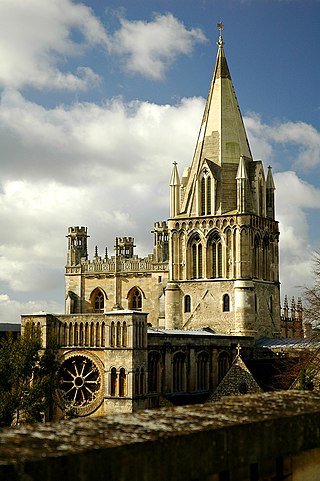
The Diocese of Oxford is a Church of England diocese that forms part of the Province of Canterbury. The diocese is led by the Bishop of Oxford, and the bishop's seat is at Christ Church Cathedral, Oxford. It contains more church buildings than any other diocese and has more paid clergy than any other except London.

The Diocese of London forms part of the Church of England's Province of Canterbury in England.
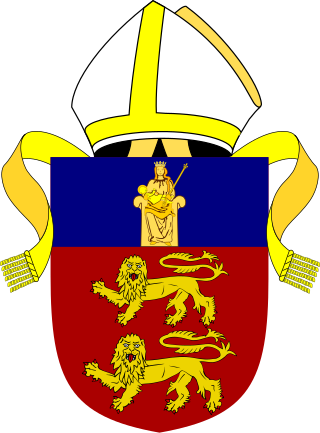
The Diocese of Lincoln forms part of the Province of Canterbury in England. The present diocese covers the ceremonial county of Lincolnshire.

The Diocese of Bath and Wells is a diocese in the Church of England Province of Canterbury in England.
A provincial episcopal visitor (PEV), popularly known as a flying bishop, is a Church of England bishop assigned to minister to many of the clergy, laity and parishes who on grounds of theological conviction, "are unable to receive the ministry of women bishops or priests". The system by which such bishops oversee certain churches is referred to as alternative episcopal oversight (AEO).
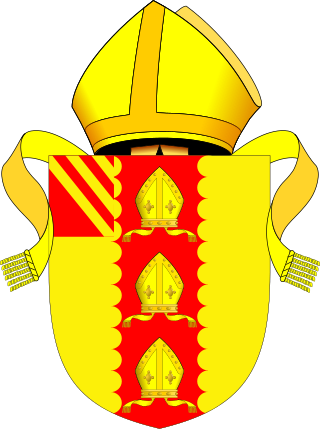
The Diocese of Manchester is a Church of England diocese in the Province of York, England. Based in the city of Manchester, the diocese covers much of the county of Greater Manchester and small areas of the counties of Lancashire and Cheshire.
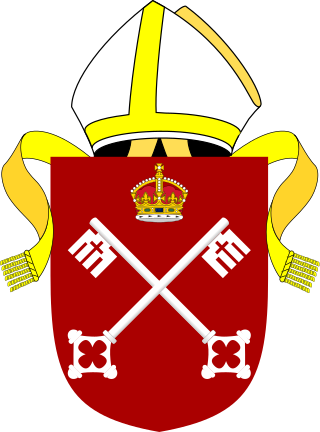
The Diocese of York is an administrative division of the Church of England, part of the Province of York. It covers the city of York, the eastern part of North Yorkshire, and most of the East Riding of Yorkshire.
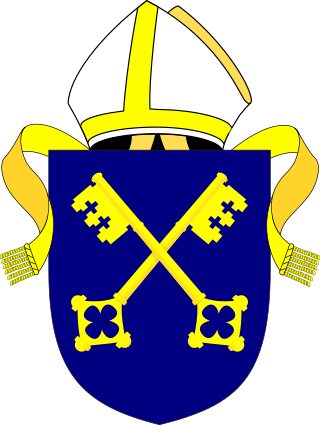
The Diocese of Gloucester is a Church of England diocese based in Gloucester, covering the non-metropolitan county of Gloucestershire. The cathedral is Gloucester Cathedral and the bishop is the Bishop of Gloucester. It is part of the Province of Canterbury.

The Diocese of Guildford is a Church of England diocese covering eight and half of the eleven districts in Surrey, much of north-east Hampshire and a parish in Greater London. The cathedral is Guildford Cathedral and the bishop is the Bishop of Guildford. Of the two provinces of the church, it is in the Province of Canterbury.

The Bishop of Dover is an episcopal title used by a suffragan bishop of the Church of England Diocese of Canterbury, England. The title takes its name after the town of Dover in Kent. The Bishop of Dover holds the additional title of "Bishop in Canterbury" and is empowered to act almost as if the Bishop of Dover were the diocesan bishop of Canterbury, since the actual diocesan bishop is based at Lambeth Palace in London, and thus is frequently away from the diocese, fulfilling national and international duties. Among other things, this gives the Bishop of Dover an ex officio seat in the church's General Synod. There is another suffragan, the Bishop of Maidstone, who has different responsibilities.
The Bishop of Maidstone is an episcopal title used by a suffragan bishop of the Church of England Diocese of Canterbury, in the Province of Canterbury, England. The title takes its name after the county town of Maidstone in Kent.
Trevor Willmott is a British retired bishop in the Church of England. He was the Bishop of Basingstoke from 2002 to 2009 and then Bishop of Dover from 2010 until his retirement in 2019. In retirement, he remains bishop for the Channel Islands.

The Anglican Diocese of Leeds is a diocese of the Church of England, in the Province of York. It is the largest diocese in England by area, comprising much of western Yorkshire: almost the whole of West Yorkshire, the western part of North Yorkshire, the town of Barnsley in South Yorkshire, and most of the parts of County Durham, Cumbria and Lancashire which lie within the historic boundaries of Yorkshire. It includes the cities of Leeds, Bradford, Wakefield and Ripon. It was created on 20 April 2014 following a review of the dioceses in Yorkshire and the dissolution of the dioceses of Bradford, Ripon and Leeds, and Wakefield.

















